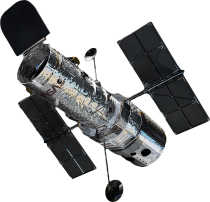




| Back to Tools By: Carter Chamberlain |
DESCRIPTION:
The following Java applet is an interactive tool for plotting spectra and identifying absorption doublets from outflows or intervening media.CONTROLS:
Loading spectra
To begin, you must provide a spectrum to analyze. This can be done two ways, both from the Import menu:- Paste the wavelength-flux pairs, separated by any delimiter, into the text area, then choose the "Import" option.
- Select the "Load .fit" option to upload a .fit file generated from a Sloan Digital Sky Survey database query.
Changing the View
After you upload the data, the spectrum is displayed across three (by default) plots.Each plot initially displays one third of the entire spectrum, but each plot can be individually scaled to show any portion of the spectrum,
allowing you to monitor three regions of interest simultaneously.
There are three modes to use for changing the view, each of which requires you to press and hold a particular key while dragging the plot with the mouse:
- PAN: Holding the SHIFT key will allow you to move the entire plot to the left or right (or up or down).
-
ZOOM: Holding the CTRL key will scale the plot from the center of the view, effectively zooming in or out of the middle of the screen.
Caution: If you start dragging from the center of the plot, the view will zoom quite rapidly,
so it is best to begin dragging between the center and the edge of the plot. -
SCALE: Holding the ALT key (or both CTRL and SHIFT) will scale the view from the edge of the plot.
For example, if you start dragging from the left half of the plot, it will scale the view while keeping the left edge fixed.
This is done from the "View" menu, where you can change the number of panels to display in each row.
Note: When you add or remove a panel, the view is reset to display the spectrum spread across all the panels.
Working with Outflows
You may have noticed that if you drag the mouse across the view without holding any of the SHIFT, CTRL or ALT keys,you will actually move the orange vertical lines side to side.
These lines represent the absorption lines of an outflow or intervening system, which you can slide along the plot
to identify any doublets that appear in the spectrum.
In addition to shifting the current system along the spectrum, you can also:
- Add a new system by clicking the ADD SYSTEM button on the bar that appears above the plots.
- Remove the current system by choosing REMOVE SYSTEM from the System menu.
-
Select a different system to shift by clicking the buttons which appear above the plots.
(The current system is displayed in orange, the other systems appear according to their redshift.)
Exporting Commands to IDL
Once the systems have been identified, you can export the commands necessary to generate maxPlots in the qso_identify.pro program.To do this, follow these steps:
- Click in the text area in the Export menu.
- Hit CTRL+A to select the entire text.
- Hit CTRL+C to copy the text.
- Run the qso_identify.pro program in another terminal.
- Hit CTRL+SHIFT+V to paste the commands.
If you don't have access to our IDL program, you can get a list of the redshift of each system from the Export menu.
COPYRIGHT:
This page and program was created by Carter Chamberlain for the Quasar Outflow group, led by Dr. Nahum Arav, at Virginia Tech.
Project codename: Doublet
Maintained by the Virginia Tech Quasar Outflow Group. Please cite responsibly.



